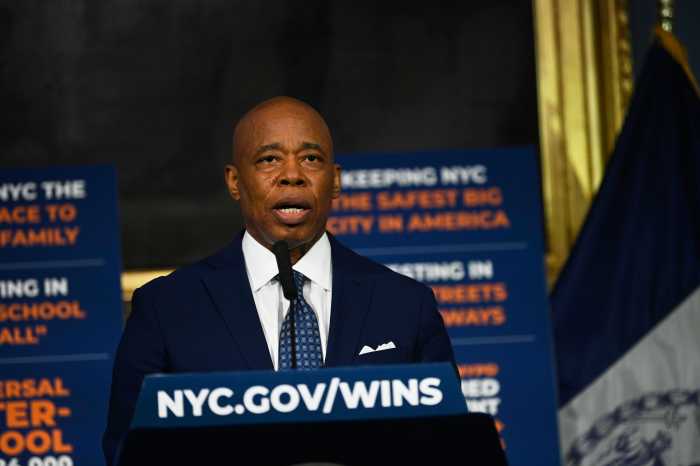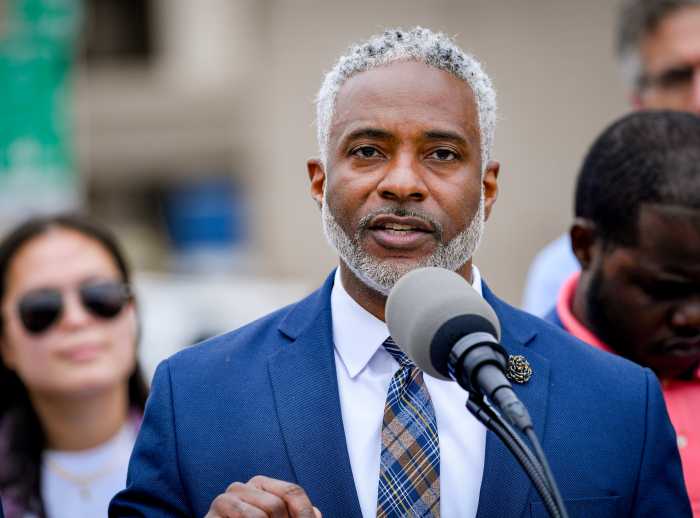Liberty-loving Americans received good news when same-sex marriage became legal in Iowa and Vermont during the last week. We believe that a sense of fairness and equal protection under the law demands that lesbians and gays should be free to marry everywhere. That’s the reason gay marriage should be legal; but this argument has not yet worked in our state Senate, New York’s last obstacle to marriage equality. Here’s a different reason that may sway wavering senators: economic stimulus.
New York has thousands of wedding venues from the Hudson Valley to Niagara Falls to Long Island to here in New York City. Hotels, restaurants, jewelers and many others are denied tens of millions of dollars in business because gays are going to other states to get married.
Governor David Paterson, a gay-marriage supporter, quite properly ruled last year that under centuries of legal precedent, he is compelled to recognize all legal marriages performed in other states. All of New York is hurting economically, and we’re not in a position to lose more jobs. New York once was progressive and it is also becoming increasingly embarrassing how far behind the curve we are.
The governor, set to introduce the marriage-equality bill later this week, stated there should be an up or down vote on the measure whether or not there are sufficient supporters for passage. Legislative leaders are traditionally loath to bring bills to the floor without an assurance of passage, but Paterson’s determination is precisely what is needed to get this debate off the dime. Senators who have no concern for the gay couples in their district, the children in these families or for equal rights, should — at the very least — care about the hardworking heterosexual families struggling to pay the bills. If it takes the wrong reason to do the right thing, so be it.
Taking a broader look at nightlife
While incidents of savage nightlife violence make good fodder for the city’s media machine, analyzing their root causes falls most heavily on the shoulders of our local community boards.
Nightlife issues continue to dominate the boards in one form or another — from the thousands of liquor-license applications reviewed each year to the myriad complaints by residents ruing encroaching clubs.
Community Boards 4 and 5, which contain nearly all the city’s popular megaclubs, do an admirable job of balancing their communities’ needs while understanding the critical importance of nightlife to the New York economy. Both boards employ their own individual methods for determining who should stay and who should go, a seemingly surgical process that club operators and residents often view as biased in the other’s favor.
But what the boards’ case-by-case procedure lacks is a larger exploration of how nightlife is evolving across the city. Not too long ago, no one could have predicted that the far reaches of West Chelsea would become some of the most sought-after real estate in the city. The area was desolate, off the beaten track, and that’s why many nightclubs moved there in the first place — precisely to avoid the kind of scrutiny placed on them that happened when the families followed.
One preliminary proposal now being considered by the two boards is the creation of a possible “nightlife district” in the Garment District, which lacks a large residential population and sits close to major transportation hubs. Regardless of whether this idea proves popular or even feasible, we urge the boards to meet more often, in general, to communicate their common concerns and expertise.
Boards 4 and 5, whose shared border between Chelsea and the Flatiron District lies in the heart of club-heavy areas, should create a task force made up of members from each board to take a more holistic look at nightlife trends.
While the idea of a “nightlife district” might not be the perfect panacea, it’s a good first step toward a broader dialogue among our boards’ most thoughtful city planners.




























